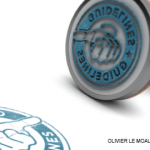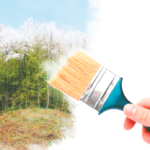Inherited Behaviors in Evidence-Based Medicine
Similarly, superstitions and mythologies are intrinsically tied to ritualistic behavior in our clinics. Until extremely recently—during the COVID-19 pandemic—we’ve donned white coats, not because they’re hygienic, but simply because they’re iconic of our profession.4 We write our notes in a stylized manner, not only for communication and billing, but also out of respect for tradition.5 So many elements of the physical examination have no empiric basis, but are still expected as part of the clinical encounter.6
Beyond these visual cues, our spoken language is highly ritualistic in clinic. Patterns of fever classically described as “quotidian” or “tertian” seem anachronistic with greater use of pyretics, yet are still found in articles and textbooks. More commonly in our clinics, we speak of “flares” as if our diseases are crackling fires with fuel and smoke, and “attacks” as if there is a hidden invader intent on causing harm. And of course, then there are the words left unsaid, like the five-letter “Q-word” describing the opposite of noise, when we are on consults, and activity seems a little lower than usual. These are all examples of mythic and ritualistic practices that persist in our modern era.
Likewise, we base many of our more modern clinical practices on assumptions received from authority. The idea that a negative ANA is somehow protective from lupus, the reluctance to contextualize and individualize clinical guidelines, and the use of classification criteria for diagnosis are examples of how we create and perpetuate assumptions based on authority. Admittedly, some of these tendencies can prove useful, but many need to be periodically questioned and, if necessary, unlearned.
An argument can be, and has been, made that all of medicine should be evidence based, but if we stripped all of these rituals, superstitions and myths away from medicine, we would feel so disjointed from our proud traditions, and our patients would be much more disoriented in terms of what to expect.
A Gesture of Humility
The more I think about it, knocking on wood is more than a superfluous throwaway gesture. It’s a signal to the patient and a reminder to myself to engage in humility. Every day, we walk a very delicate line between offering reassurance and acknowledging risk. Contrary to common belief, communication in medicine is not just about clarity. It’s also about managing expectations and about uncertainty. A gesture like knocking on wood communicates this ambiguity in a way we simply cannot do with words.


